#wildlife poaching
Text

Anthony Douglas Williams is the author of Inside the Divine Pattern.
Photograph with kind permission from Nick Brandt.
35 notes
·
View notes
Photo

Illegal Jaguar Poaching Suriname - Insightcrime
0 notes
Text
Protecting Biodiversity and the Integrity of Forests in the Dong Phayayen-Khao Yai World Heritage Site.
The management challenges in Dong PhayayenAKhao Yai are serious and complex. A major, integrated investment programme is needed, building on UNDP’s Catalysing Sustainability of Thailand's Protected Area System (CATSPA) project and on DNP’s master plan for DPKY. The programme would act at the following levels:
Research and database
Update database on status and trends in biodiversity in DPKY (possibly in collaboration with the PAD2 project ("Protected Areas, Development, and Climate Change in the Greater Mekong Sub-region" project - currently under development);
Assess carbon storage potential and economic valuation of DPKY;
Identify critical areas for forest restoration and protection to link research with conservation
Strengthening of ranger force
Ensure that the ranger force is provided with all the necessary field equipment, including uniforms, boots, tents, sleeping bags, backpacks, binoculars, GPS units, radios, etc. by building on the USAID funded Asia's Regional Response to Endangered Species Trafficking (ARREST) programme;
Provide additional training and capacity building to the ranger force in the use of MIST (Management Information System) and the latest SMART (Spatial Monitoring and Reporting Tool) patrolling techniques and innovative park-based technology support (Field Information Support Tool);
Law enforcement and judiciary
Organise seminars and set up working groups with representatives from the judiciary system with the aim of increasing the proportion of cases successfully prosecuted and strengthening penalties imposed in judgments for wildlife-related crimes;
In collaboration with the Thailand Department of National Parks, Wildlife and Plant Conservation (DNP) and a special government unit devoted to national security called the Internal Security Operations Command (ISOC), organise seminars and set up working groups with customs and border control units to raise awareness on the issue of illegal logging of Rosewood and wildlife poaching and strengthen detection and law enforcement;
Park management
Support DNP to develop an updated management plan for the entire World Heritage complex with the aim of providing objectives for the management of the entire area in an integrated way and to promote collaboration and coordination among the different units. At the moment, each protected area in the complex is managed as an individual unit and there is relatively little sharing of information or resources;
Support DNP and RFD to develop a management strategy for the wider landscape, to ensure that surrounding land-uses are compatible, that any infrastructure development projects are sustainable and that key ecological corridors are maintained;
Forest restoration and transboundary natural resource management
Promote restoration of degraded areas in and around the protected areas (including encroached areas that have been reclaimed by the National Parks, National Reserve Forest, land under the Agricultural Land Reform, and private land) using techniques such as enrichment planting and assisted natural regeneration (ANR) in collaboration with DNP, RFD, civil society organizations and private sector entities. This will also include the planting of high-value timber species in in situ and ex situ conservation sites (i.e., inside and outside the protected areas);
Foster transboundary collaboration on ecosystem services, watershed and natural resources management between Thailand and Cambodia;
Buffer zone management and surrounding communities
Promote alternative livelihoods for surrounding communities in selected areas in order to provide new sources of income, such as ecotourism activities, agroforestry and family forest and farm practices. This may include the planting of high-value timber species, as well as edible species, wild fruit and medicinal plants to restore forest on farmland while at the same time encouraging communities living around the World Heritage Site to develop alternative livelihood opportunities through "wise use" practices based on the concept of sufficiency economy, as well as vocational training to provide alternative livelihoods to poachers;
Create a buffer zone between the protected area and community utilized areas, ensuring that the buffer zone is properly managed with the collaboration of the national park officers and community members living adjacent to the national parks;
Develop more participatory models of management that actively involve local communities, as well as benefit sharing arrangements and mechanisms and rules for the conservation and sustainable use of forests, and mechanisms that address human-wildlife conflicts. This will also include the establishment of community forests in national forest reserves;
Develop and implement an intensive environmental education programme in the villages surrounding the park to enhance the understanding and raise awareness of the ecology and values of the forest and to promote the conservation of forest resources by communities and local governments;
International dialogue
Promote high level forums and investigative networking groups involving Thailand, Cambodia, Lao PDR, Viet Nam and China on the issue of illegal logging of Rosewood and wildlife poaching
The protection of Dong Phayayen-Khao Yai is critical to achieving the targets set out in Thailand's Integrated Biodiversity Management Plan 2013-2021. In addition, the outcomes of this project will be beneficial to other protected areas in Thailand, where Rosewood and wildlife poaching is also an issue.
Thus, the overall goal of this project is to significantly reduce the threats to biodiversity and the integrity of forests in the Dong Phayayen-Khao Yai Forest Complex.
Protecting Biodiversity and the Integrity of Forests in the Dong Phayayen-Khao Yai World Heritage Site.
#Thailand#Forest Biodiversity#biodiversity#ecology#biodiversity conservation#terrestrial biodiversity#soil biodiversity#assisted natural regeneration (ANR)#integrity of forests#biodiversity threats#Wildlife poaching#Rosewood#Forestry resource management#MIST (Management Information System)#illegal logging
0 notes
Text
This is a long read, but a good one, well-written. It's an excellent overview not just of the headline--the murder of game warden Guy Bradley--but the surrounding circumstances including the demand for bird feathers in the late 19th and early 20th centuries.
It surprises a lot of people in my birdwatching classes when I tell them that the possession of most native bird feathers is against federal law. "But it's just a feather I found on the ground!" I'm well aware of that, and the vast majority of people who pick up a molted feather would never do harm to a bird to get more of them. It's almost impossible to differentiate between a natural molt, and a feather torn from a poached bird, though, so the law bans them across the board.
After reading the article, this may make more sense to you. Think of the avarice of the plume hunters who went into the wetlands and forests and gunned down thousands of birds in a day, just for the feathers. They continued even after it became illegal, simply to fill the demand for feathers--or wings, or entire taxidermied birds--for hats. Couldn't you imagine such a person removing the feathers from the carcasses of birds they'd shot, and then claiming they were simply very good at finding molts?
The Migratory Bird Treaty Act of 1918 protects almost all native wild birds in the United States; you can find the list of of protected species at https://www.federalregister.gov/documents/2023/07/31/2023-15551/general-provisions-revised-list-of-migratory-birds. There's also a list of (mostly non-native) birds that are not covered under the MBTA at https://www.federalregister.gov/documents/2020/04/16/2020-06782/list-of-bird-species-to-which-the-migratory-bird-treaty-act-does-not-apply.
#birds#birding#birdwatching#birdblr#feathers#plume hunting#poaching#wildlife#animals#environmentalism#conservation#endangered species#animal welfare#Vulture Culture#hunting#history#American history#nature#ecology#environment
148 notes
·
View notes
Text
The global illegal wildlife trade is largely facilitated by organised criminal networks. For instance, pangolins are poached extensively in Asia and Africa to meet the demand arising from China. Research shows many other endangered species from the Global South end up reaching the Global North.
For example, a recent study found that there were at least 292 seizures of illegally traded tiger parts at United States ports between 2003-2012; the majority of them from the wild in Asian countries where tigers still roam free. The over 6,000 wildlife seizures reported by European Union member states in 2018 represent 16,740 specimens of species protected under the Convention on International Trade in Endangered Species of Wild Fauna and Flora, and mostly originated from the developing world.
Clearly, local harvesters in poor countries are not the ones organising complex transnational operations to transport wildlife parts across international boundaries. The international kingpins and an extensive network of smugglers run this nexus. If the aim is to break this cycle of crime, it is these networks that need to be disrupted; it is the consumers they feed who need to be penalised.
146 notes
·
View notes
Photo

Finding a motive: The researchers looked at more than 10,000 elephant killings across 30 countries in Africa. Now their data proves a longtime theory: Poaching is driven by need rather than greed. “When we are looking to protect wildlife, we can't do that without thinking about the well-being of people,” Timothy Kuiper, a co-author of the study, tells us. (Pictured above, an African elephant grazes in a field in a reserve in Kenya.)
PHOTOGRAPH BY DAVID CHANCELLOR, NAT GEO IMAGE COLLECTION
#david chancellor#photographer#national geographic#elephant#mammal#animal#wildlife#poaching#african elephant#kenya#animal reserve#nature
18 notes
·
View notes
Photo
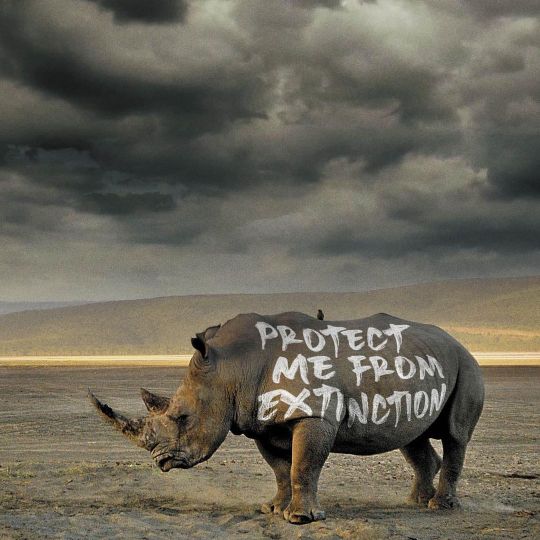
Happy #RhinoFriday Let us stop this madness at all costs. #SaveTheRhinos Please Protect Rhinos from Extinction by supporting conservation bodies of your choice. Join us over by supporting veterinary wildlife charity @savingthesurvivors who treat victims of poaching & unfortunate circumstances as well provide proactive life saving measures. Donate from $5, save posts, share their amazing work to your story & buy T-shirts from Wildography store (link in bio). https://www.savingthesurvivors.org/donate/ https://wildography.myshopify.com/ Photo by conservation #wildographer @phillip.wessels #Wildography #antipoaching #conservation #wildlife #africa #wildlifeconservation #rhino #poaching #endangeredspecies #savingthesurvivors #stoppoaching #wildlifephotography #safari #southafrica #rhinoconservation #rhinos #counterpoaching #wildlifecrime #stoprhinopoaching #rhinopoaching (at Somewhere in Africa) https://www.instagram.com/p/Ce6OD7jLsWJ/?igshid=NGJjMDIxMWI=
#rhinofriday#savetherhinos#wildographer#wildography#antipoaching#conservation#wildlife#africa#wildlifeconservation#rhino#poaching#endangeredspecies#savingthesurvivors#stoppoaching#wildlifephotography#safari#southafrica#rhinoconservation#rhinos#counterpoaching#wildlifecrime#stoprhinopoaching#rhinopoaching
205 notes
·
View notes
Text

#Indianelephant, #rhinoceros #Horn #Wildlifetrafficking #BigFive #Savannah #TuskProtection #Nationalparks #Wildlifereserves #Biodiversity #Africanwildlife #Asianwildlife #Wildlife #sanctuaries #Elephant #calves #Rhinocalves #Wildlifepoachers #Conservation #efforts #Wildliferehabilitation #Antipoaching #measures #AnimalRights #Wildlifedocumentaries #Wildlifephotography, #Elephantbehavior #rhinobehavior #Conservation #organizations #Wildlifetracking #Wildliferangers #Wildlifeeducation #Ecotourism #Conservationbiology #Wildlifehabitats #Elephant #intelligence #Rhinointelligence #Wildlifeextinction #Wildlife protection #lawsAnimal #welfare #Wildliferesearch #Wildlife migration #Wildlife #populationtrends
A matchup between an elephant and a rhinoceros would be quite the spectacle! Both are massive animals with unique features and strengths.
In terms of sheer size, African elephants are the largest land animals, weighing several tons and standing up to 13 feet tall at the shoulder. Rhinoceroses, on the other hand, are smaller but still formidable, with the largest species, the white rhinoceros, weighing around 2.2 to 3.6 tons.
In a confrontation, the outcome would likely depend on various factors such as the species of elephant (African vs. Asian), the species of rhinoceros (white, black, Indian, etc.), the individuals involved, and the circumstances of the encounter.
Elephants are known for their intelligence, social structure, and formidable strength. Their tusks can be used as weapons, and they have powerful trunks that can push over trees and fend off predators.
Rhinoceroses, while not as agile or intelligent as elephants, possess thick, armor-like skin and formidable horns. Their charge can be incredibly powerful, and they have been known to flip vehicles in confrontations.
youtube
#Elephant#Rhino#Wildlife#Conservation#Safari#Endangered species#Ivory#Poaching#Habitatloss#Africanelephant#Indian elephant#rhinoceros#Horn#Wildlifetrafficking#BigFive#Savannah#TuskProtection#Nationalparks#Wildlifereserves#Biodiversity#Africanwildlife#Asianwildlife#sanctuaries#calves#Rhinocalves#Wildlifepoachers#efforts#Wildliferehabilitation#Antipoaching#measures
2 notes
·
View notes
Link
Excerpt from this story from Mongabay:
You’ve heard of smartphones, smart cars, smart cities, even smart refrigerators, but have you heard of Smart Parks? Smart Parks is a Netherlands-based team of technologists dreaming up inventive ways to realize the founders’ vision of bringing the power of modern technology to bear in conservation.
“Big tech organizations like Google and Microsoft have big conservation programs, but it’s not their core business,” says Tim van Dam, one of the co-founders of Smart Parks and a telecoms expert. “We know that if something is not your core business, you cannot get to the high-performance level that is needed for technological devices.”
Smart Park’s philosophy is to apply an innovative and research-and-development-focused approach, more commonly found in Silicon Valley, to conservation problems. While they explore many different forms of tech, they’re best-known for building so-called LoRa networks in parks and conservation areas, mostly in Africa, through which multiple devices can be connected to create “smart parks.”
LoRa, or long range, technology is a networking protocol that uses radio waves, much like the 4G and Wi-Fi networks. The key difference is that while 4G and Wi-Fi are designed to send a lot of data a short distance by using a lot of power, LoRa technology is designed to send tiny amounts of data — about the size of a text message — a very long way, using much less power.
LoRa’s lower power requirements allow Smart Parks to design tracking devices that are smaller than traditional satellite collars. This is especially advantageous for tracking smaller animals like wild dogs, which can’t take the weight of a large battery, and, perhaps surprisingly, rhinos. While a rhino could easily carry the weight of a heavy battery, collars don’t work with their body shape.
Protecting the near-threatened southern white rhino (Ceratotherium simum simum) and the critically endangered black rhino (Diceros bicornis) is one of Smart Parks’ current main aims. Its rhino tracker is just under three centimetres cubed, small enough to be implanted into a hole cut into the rhino’s horn and then sealed by a vet.
8 notes
·
View notes
Text
you will all be thrilled to learn that my book about the illegal trade in rare birds of prey has multiple references to formula one. what a surprise!
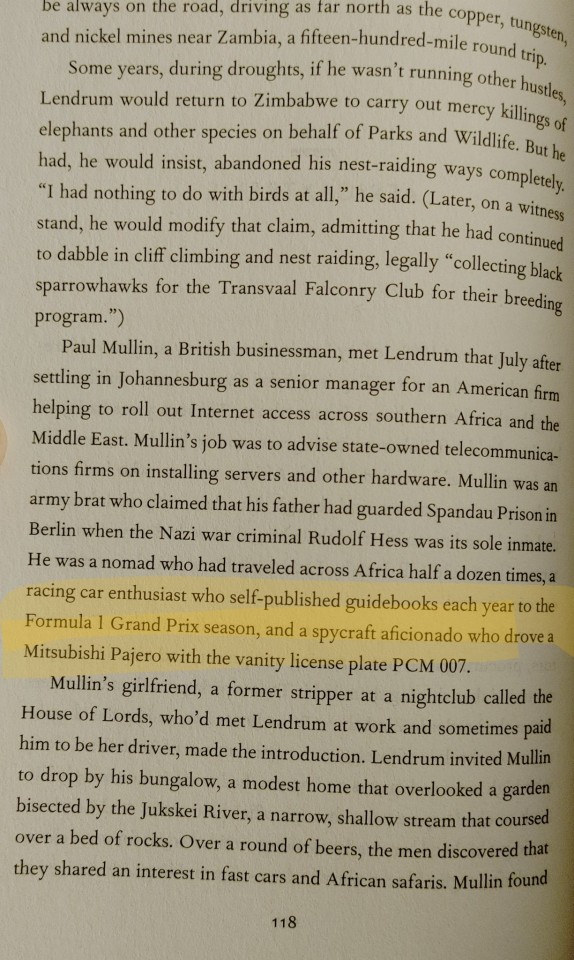
#my library guy recommended it#It's a pretty interesting read#The author cites a bunch from this 80s book by a MI6 agent and arabist on middle eastern falconry which makes me go a little 🤔#And it's I guess kind of true crime since it's mostly following this cop who gets into wildlife crimes basically#So the politics underlying the book are a bit wonky#But the story itself is pretty fascinating and written in a readable and logical way#This one dude sees his friend fall from a cliff while trying to poach wild eggs#And he's like. Yeah. My friend is dead but I'm hooked.#In MY BIRD REPORT OF THE DAY: adult and juvie bald eagle (dead cow)#And pine grosbeak which I was happy about as they r so cute
2 notes
·
View notes
Text
The Endangered Giants: Elephants
The Endangered Giants: Elephants
I was surprised to see that I never made an animal post about elephants. Didn’t even have them on my list. Maybe I did it and can’t find it, but you would think they would be early in my posting of endangered animals. After all, most people know about elephants and how they are endangered.
The World Wildlife Organization has a great site about them. I’ll paraphrase since I don’t think I have…
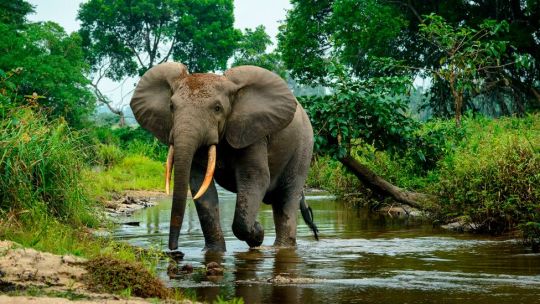
View On WordPress
2 notes
·
View notes
Text
How is it "hunting" when you use a gun?
#poaching#hunting#trophy hunter#trophy hunting#wildlife#endangered species#elephant#elephants#rhinos
0 notes
Text
Today's Top Environment News Alert
◆ A leopard was found dead on National Highway (NH) 44, near Khatu Shyam temple in north Delhi’s Alipur, in the early Wednesday – just days after another big cat was sighted in south Delhi’s Sainik Farms.
◆ Developed by US-based NGO Resolve, TrailGuard AI is an innovative camera trap that is designed to detect specific species and transmit images of them instantly. Conservationists in India saw potential for its use in managing human-tiger conflict.
◆ One person was arrested for killing two barking deer that strayed into his paddy field in Jharkhand’s Simdega district, a forest department official said on Thursday.
◆ Activists and people’s representatives on Wednesday met Forest, Ecology and Environment Minister Eshwar B Khandre and requested him to conserve varieties of citrus fruits, especially Sakkare Kanchi (pomelo) which was disappearing from the Western Ghats
◆ Meet Yashwant Budhwani, Harsh Somani, and Khalid Ansari - three guys who've come up with something pretty cool for car owners. They've started Hoora, a new car wash service that's all about making your life easier and being kind to the planet
#environmentind#india#news#newsalert#wildlife#forest#ecology#environment#delhi#wildlifeprotection#greentech#greentechnology#ai#conservation#wildlifeconservation#jharkhand#wildlifecrime#poaching#westernghats#trees#activism
0 notes
Text
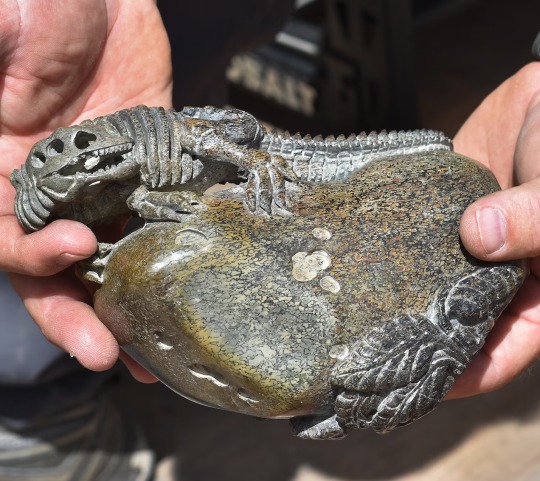
This Carving from Dinosaur Bone, priced at almost $50,000, was part of a recent seizure of thousands of pounds of fossils that had been illegally excavated from Federal and State Lands in Utah. Photograph By Bureau of Land Management
U.S. Charges Poaching Ring Allegedly Involved in Massive Utah Dinosaur Bone Heist
After Being Excavated and Fashioned into Dinosaur Dig Kits, Carved Figurines, Jewelry, and More for Sale, "Tens of Thousands of Pounds of Dinosaur Bones have Lost Virtually all Scientific Value.”
— By Dina Fine Maron | October 19, 2023
Federal prosecutors today announced charges against four people allegedly involved in a massive dinosaur bone smuggling scheme. Thousands of pounds of dinosaurs and other fossils were secretly excavated from government lands in Utah, according to court documents. Some were sold at gem shows, and others were shipped to China after being mislabeled as construction materials or gems. The poaching and subterfuge, court documents allege, lasted at least from March 2018 to earlier this year.
“By removing and processing these dinosaur bones to make consumer products for profit, tens of thousands of pounds of dinosaur bones have lost virtually all scientific value, leaving future generations unable to experience the science and wonder of these bones,” United States Attorney Trina Higgins said in a press statement.
"It’s certainly a significant volume of dinosaur bones," says David Evans, a paleontologist at the Royal Ontario Museum who’s not involved in the case. He adds that it’s unusual for so much material to be removed from government lands, and that many people likely aren’t aware of the scale of the black market on U.S. dinosaur specimens.

Officials tested more than 1,000 dinosaur bones seized from the residence of Vint and Donna Wade in Utah to determine if they were illegally dug up from Federal Lands. Photograph By Bureau of Land Management
Some of the dinosaur bones were fashioned into commercial products, including dinosaur dig kits, carved figurines, knives, jewelry, and polished bowling ball-like spheres, according to court documents.
Federal agents seized one shipment of dinosaur bones bound for China in December 2022 in Long Beach, California. The 17,000 pounds of fossil material had been mislabeled as industrial stone.
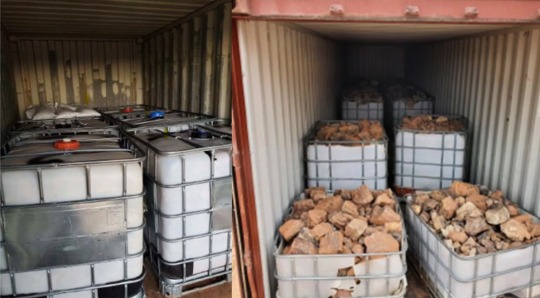
Dinosaur bones shipped to China were allegedly mislabeled as industrial stone or other substances. Photograph By Bureau of Land Management

The items were also sometimes polished and fashioned into dinosaur bone jewelry. Photograph By Bureau of Land Management
Before now, one of the biggest known dinosaur fossil busts occurred in 2006, when 8,000 pounds of fossils—including thousands of dinosaur eggs, petrified pine cones, and prehistoric crabs—were seized by U.S. Immigration and Customs Enforcement agents at a gem and mineral show in Tucson, Arizona. Those items had been illegally taken from Argentina.
In Utah, dinosaur bones found on private lands may be legally excavated and sold, but it is a crime to dig up and sell fossils discovered on federal or state lands. Charges against the four Utah defendants, who are scheduled to have their initial court appearance later today in Salt Lake City, include conspiracy against the U.S., false labeling, theft of U.S. property, money laundering, and attempted smuggling of goods, among others.
A Dino 🦕 Trafficking Scheme
Beneath Utah’s surface, there’s a rich cache of dinosaur fossils, revealing details about prehistoric animals such as carnivorous allosauruses and spine-backed stegosauruses. Almost three-quarters of the state consists of public lands managed by federal or state agencies, and recent fossil finds there include a huge collection of Utahraptors and an entirely new species, a big-nosed distant relative of Triceratops.
Court documents describing the years-long Utah poaching operation allege that Vint and Donna Wade purchased illegally obtained bones and other fossils to sell at U.S. gem and mineral shows and also to ship to China, and that Jordan Willing and his father Steve Willing trafficked dinosaur bones to China using their company JMW Sales. The documents also allege that two unnamed and unindicted coconspirators illegally excavated fossils from federal lands and sold them off to the Wades.
In total, the Wades sold over $1 million in paleontological material to the Willings, according to the court documents, which were filed in the U.S. District Court in the District of Utah.
The fossil heist also led to $3 million in damages, the federal government claims, including large restoration and repair expenses and the costs of losses to science.
During the years of the alleged smuggling activity, the fossil shipments did sometimes run into problems. One shipment of dinosaur bones that was sent from Scottsdale, Arizona, to China in March 2019 was falsely labeled as items including jasper and wood, but the cargo was ultimately held up in China “due to high radiation levels,” court documents state. The fossilized materials had apparently picked up natural radioactive material over time. (Investigators can sometimes discover the origin of fossils based on radioactive signatures in the specimens that provide clues about where they were buried.)

A scientist tests a dinosaur bone for radiation to help determine its origin. Over time, fossils may pick up naturally occurring radiation from their environment which can help investigators determine where they'd been buried. Photograph By Bureau of Land Management
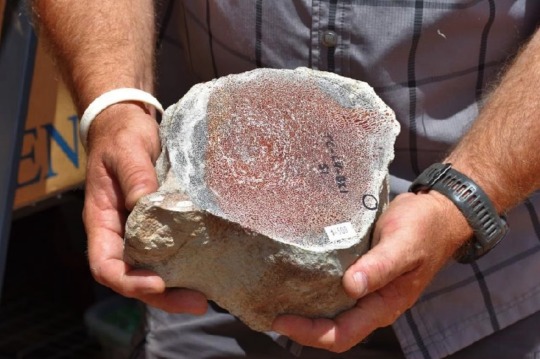
Each radiation-tested bone was labeled with a unique identifier, and a circle was added to mark where it had been sampled. This fossil had been priced at $4,500. Photograph By Bureau of Land Management
Paleontologists typically remove dinosaur bones using a methodological process designed to limit damage and preserve evidence found in the fossils and their surroundings—information about when dinosaurs lived, what species they were, and sometimes even how they behaved.
Amateur diggers hunting for recognizable body parts to sell, however, generally do not take such care. Federal prosecutors claim that the loss to science from this poaching ring is largely incalculable.
#Science#Wildlife Watch#Poaching#Dinosaur Bone Heist#Utah | US 🇺🇸#Dinosaur Dig Kits | Carved Figurines | Jewelry#Dina Fine Maron | National Geographic#Consumer Products | Profit#China 🇨🇳#United States Attorney | Trina Higgins#David Evans | Paleontologist | Royal Ontario Museum#China 🇨🇳 | Long Beach 🏖️ | California | US 🇺🇸#Fossils | Dinosaur Eggs 🥚 | Petrified Pine 🌲 Cones | Prehistoric Crabs#Tucson | Arizona.#Argentina 🇦🇷#Carnivorous Allosauruses | Spine-Backed Stegosauruses#Triceratops#Vint | Donna Wade#Wades | Willings#Scottsdale | Arizona
1 note
·
View note
Text
26 Aug 2023 – Happy Painted Dog Day! Painted dogs are amazing apex predators of the African savanna, who by regulating prey populations, help preserve this important ecosystem. ☮️ Peace… Jamiese




#endangered species#painted dog#savannah#animal habitat#endangered animals#endangered wildlife#african wild dog#african wildlife#wildlife photography#animal photography#animal photoshoot#serengeti#biodiversity#poaching#animal art#habitat loss#habitat destruction#animal lover#predator#unique species
1 note
·
View note
Text
The damaging effects of failing to protect the Gray Wolf
The Gray Wolf, once roaming most of North America, is now only found in pockets across the United States. With their numbers dramatically declining because of poaching, habitat destruction and other human interference, it’s crucial that we protect this species as much as possible. Unfortunately, three states have refused to adopt legislation protection known as the Endangered Species Act (ESA)…

View On WordPress
#communication#conservation#Ecosystem#Endangered Species#Gray Wolf#Hunting#Poaching#wildlife#wildlife protection#Wolf
1 note
·
View note